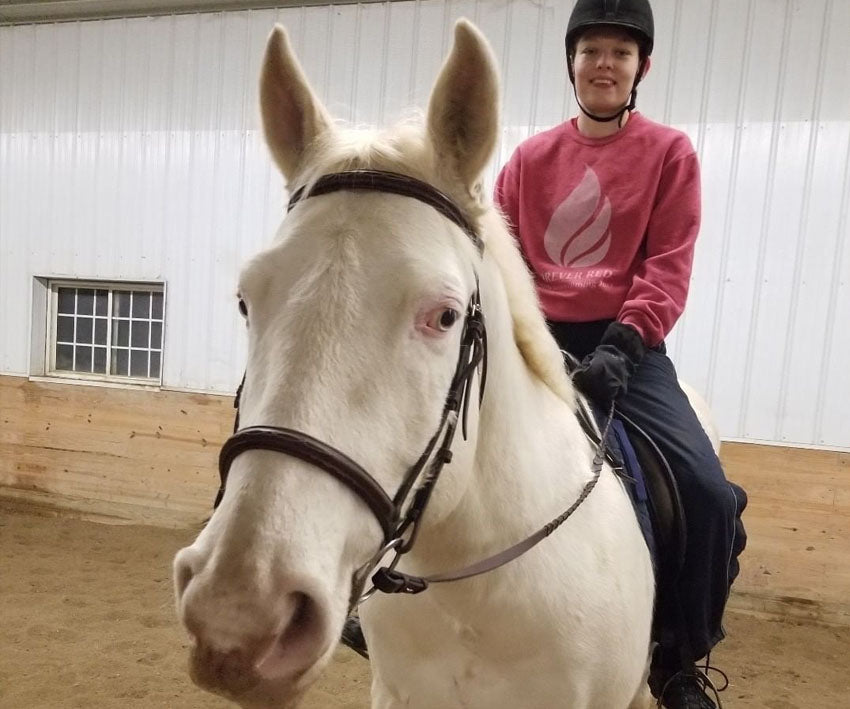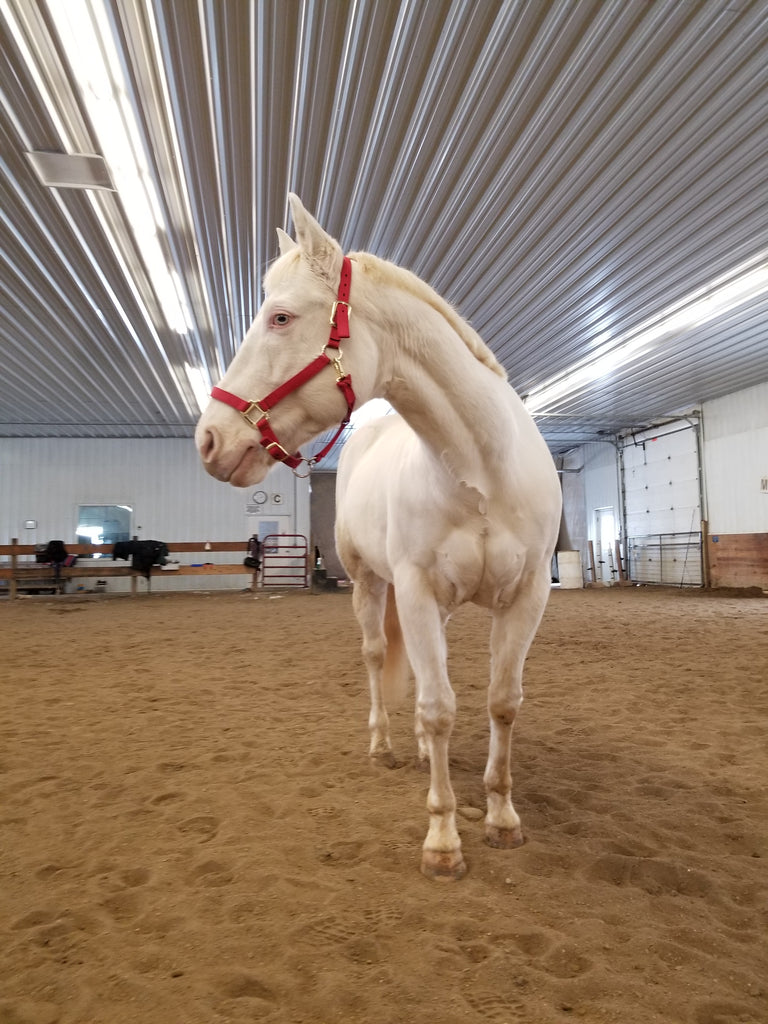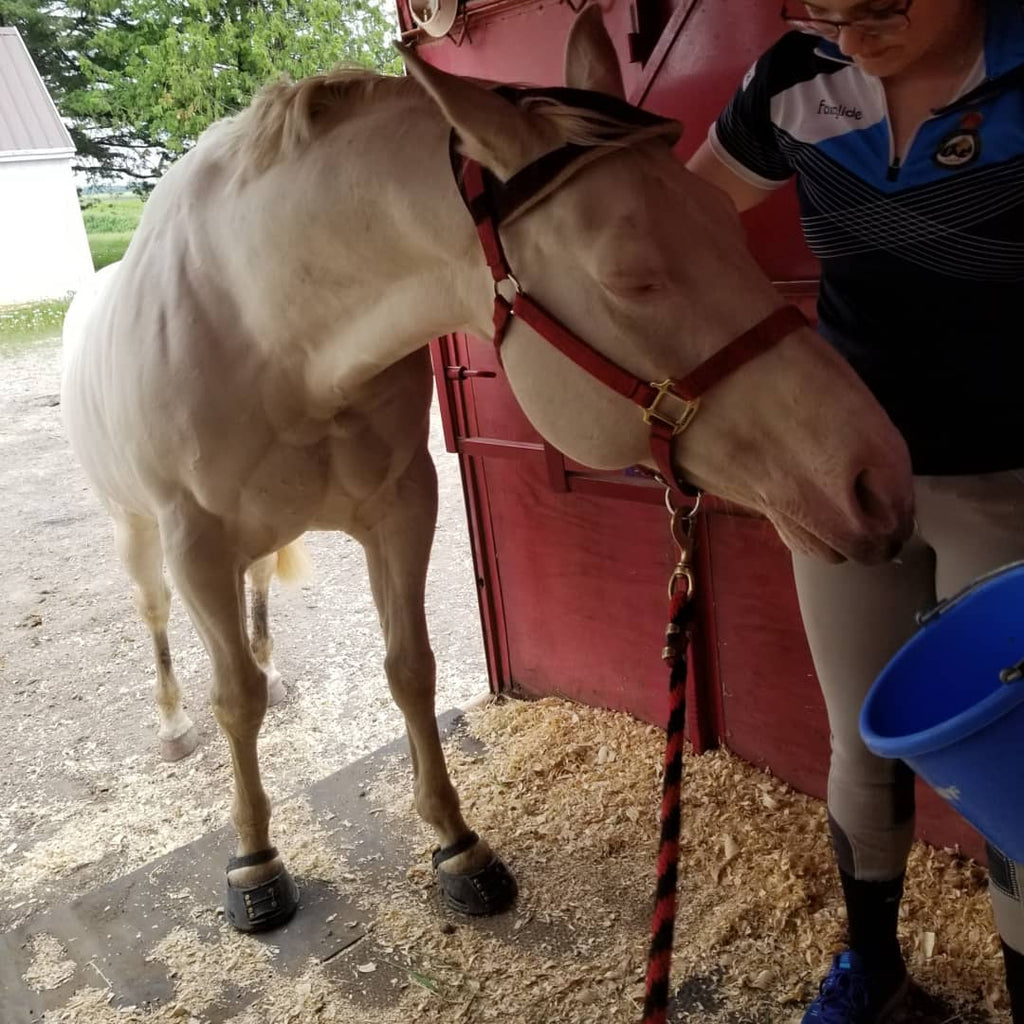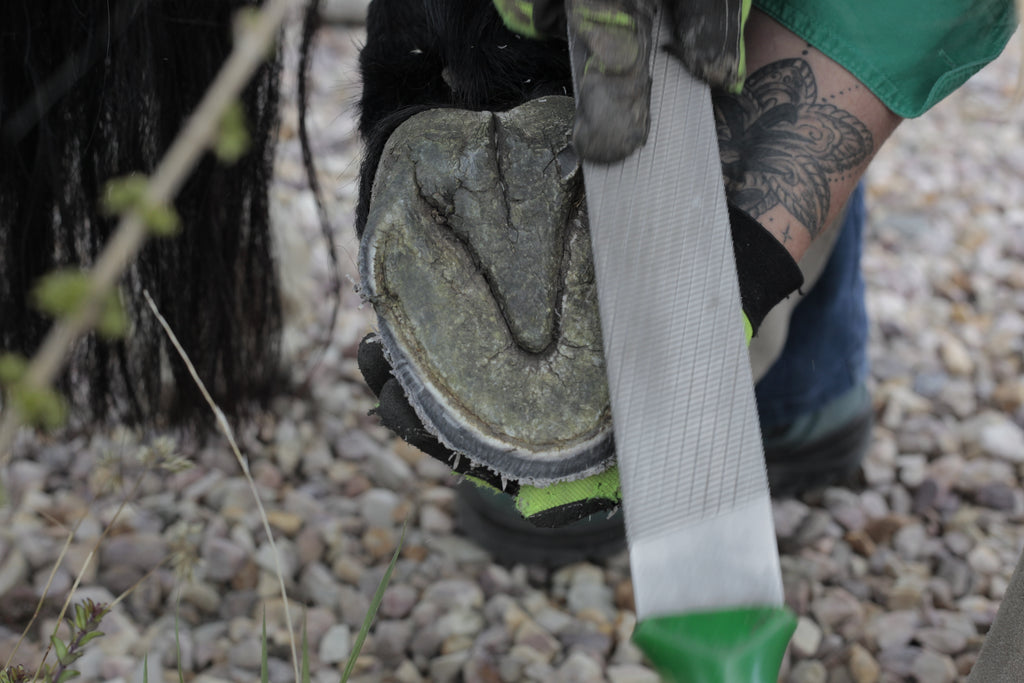
How Scoot Boot User, Annika Greaney, Transitioned her Chronically Lame Horse to Barefoot
Share
Annika Greaney’s Barefoot Transition Journey
Since it was founded, Scoot Boot has been a proponent of barefoot trimming in the horse world. Through our blog, we have highlighted many stories of horse owners who have transitioned their horses from metal shoes to barefoot for a variety of reasons. Keeping your horse barefoot benefits them in so many ways, barefoot trimming leads to healthier hooves and an overall healthier horse.
The following interview highlights the story of a rider who recently transitioned her chronically lame horse to barefoot, her experiences and the results she has seen so far.
Annika is a rider living in North Dakota, USA. She purchased her horse, Butter, in January of 2020. He came with a long list of lameness issues that his previous owner had been unable to resolve. Shortly after purchasing him, Annika decided to remove his shoes altogether and transition him to barefoot. This is her story...

Can you Tell us a Little More About Yourself and Your Horse?
I was born in the UK and moved to Sweden when I was 10. I grew up riding with my aunt in Sweden. I then came to the U.S. after college and I currently live in North Dakota. Once I moved here, I got back into riding.
Butter is my first owned horse. I brought him home in January, 2020. His previous owner had him his whole life. Two years before I bought him he was out riding and stepped in a hole. He came up lame and they put him to pasture to see if he would heal. He didn’t. They tried starting him again with a trainer not too long before I bought him and he was lame off and on. That’s why they decided to sell him.

What got you Into Riding? How did it all Begin for you?
When I lived in Sweden, my aunt had her own horse and then leased a pony for me to ride. The pony had a ton of hoof issues and the owner was a farrier so he was able to keep him in work with intensive ongoing efforts. I rode that pony for a few years then transitioned to more experienced ponies as I learned more.
After a few years, we moved away from where my aunt lived and I rode anything I could get my hands on. I worked with some Icelandics for a while which was really interesting. Then, we moved again and I got to work with a really hot horse that needed a lot of schooling. I loved the challenge of working with him. I’ve also been able to work with a retired police horse who was around 18 hands which was a neat experience.
My riding foundation is dressage and I’ve also done a little low level jumping. Because I haven’t owned my own horses, I’ve worked with a lot of ‘problem horses’. I’ve really learned a lot from all of their different challenges.
I took a few years off from riding during college and have gotten back into it since moving to the U.S.

You Recently Decided to Take Butter Barefoot. Can you Tell us What led you to That Decision?
When I bought Butter, they told me that he was so tender footed that I would never be able to pull his shoes. I left his shoes on for the first 8 weeks I owned him. During that time, he would be fine for 6 days of riding, then come up lame on the 7th day.
Where I live in North Dakota we have really thick mud, so it’s almost impossible to keep shoes on. Basically no horses in my area are able to keep shoes on. Because of the issues with the mud, my farrier and I decided to go ahead and take the shoes off after the first 8 weeks he was here. He was really lame at first. We knew he was going to need some extra support to do anything outside of walking in the arena.
That’s where Scoot Boots came in. I love their breathability and how shock absorbing they are. Butter has been really happy and comfortable in them. I can tell that he feels like he doesn’t have to be so careful when he moves. He moves much more confidently and correctly when he wears his Scoot Boots.

Did you Have any Fears or Concerns About Taking Butter Barefoot?
I wasn’t sure if he was going to be able to do it. He was so lame, when we took the shoes off, that I wasn’t sure if it was going to work out. On the foot that he goes lame on, he has a terrible flare, navicular cyst and coffin bone degradation. He also had no hoof wall, needed padded shoes and had really small feet for his size. That combined with his lameness issues concerned me. I just wasn’t sure if he could ever be comfortable barefoot. And being in the middle of COVID it wasn’t going to be as easy to find help if barefoot didn’t work out.
Barefoot has been a new experience for me living in North Dakota. Everywhere I’ve lived before, most horses are shod. Here, it’s a challenge to keep shoes on because there is so much mud and clay. So there are a lot of barefoot farriers in my area and most horses are barefoot. I was hopeful that my farrier would be able to help Butter transition to barefoot over time.
How has Your Horse’s Life Changed Since Taking him Barefoot?
His personality has really changed since he went barefoot. It’s been amazing to see his transformation. He moves completely normally now and is so much more comfortable. I can tell that he’s a lot happier. He also loves his Scoot Boots! He can ride in the arena barefoot completely and we use the boots outside of the arena.
You Have Chosen to use Scoot Boots on Butter. Why do you use Boots Instead of Keeping him Completely Barefoot?
Butter needs the extra support. The Scoot Boots help him move comfortably outside of sandy arenas. He’s had so many lameness issues that his feet need the protection. With Scoot Boots he’s able to live a normal life and move confidently. Scoot Boots have made a big difference in his comfort and happiness.

How Have you Been Using Wedges in Your Scoot Boots?
Wedges the vet said. No can do said the farrier, our crazy mud here would pull the right off. So we improvised, and Butter is happy! Single pad and then a second pad cut to create an angle, all sitting nicely in place and no lost boots after a week of 24/7 in the pasture. Problem solved!

Conclusion
The world of equine care is constantly evolving. As research continues to expand in the area of hoof care, more experts in the field are becoming convinced of the benefits of barefoot trimming. When deciding what is best for your horse, it is important to research your options and learn from the experience of others.
If you believe your horse could benefit from being barefoot, seek out a barefoot specialist farrier in your area. Barefoot specialist farriers are all over the world and are often very knowledgeable about how barefoot trimming can benefit horses in a variety of circumstances. Ask around and you are likely to find a barefoot farrier near you. You can also read our blog for information on taking your horse barefoot and for interviews with experts on the topic.
Building a Supportive Barefoot Community
The team at Scoot Boot believe passionately in the barefoot horse and strive to build a supportive community of barefoot horse lovers.
Find more information about using Scoot Boots here.

